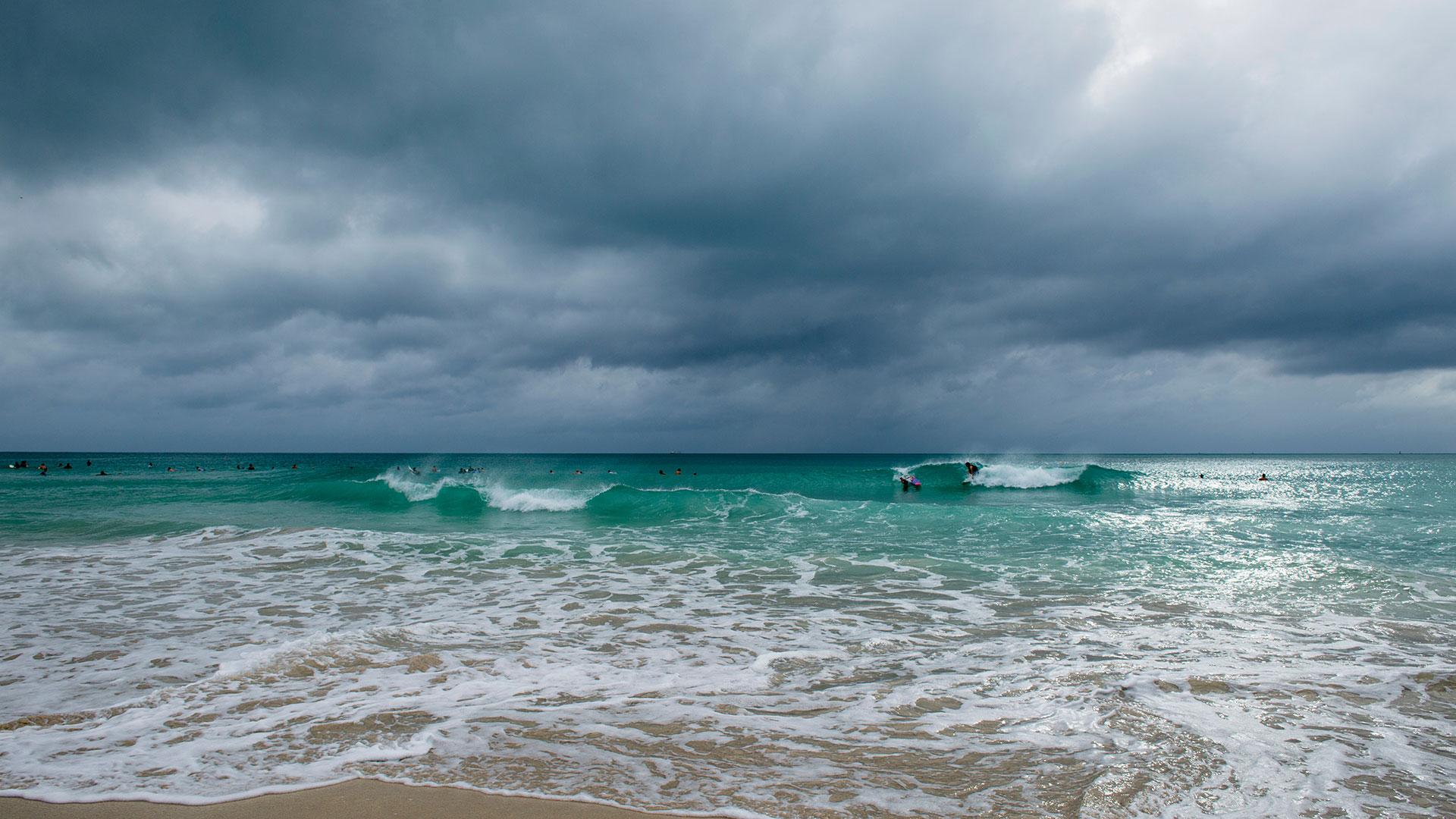20 April 2023
26 November 2019
An important diurnal cycle in convection, cloudiness and surface temperature exists for all regions of the tropics. It is currently not very clear how these tropical atmospheric specificities impact the Atmospheric Motion Vectors extracted from satellite imagery. However, most of NWP SAF AMV monitoring reports show the existence of a positive Observation minus Background (O-B) speed bias in the tropical region of the upper troposphere for most satellite-channel combinations, and a negative speed bias in the extra-tropics. The positive speed bias in the tropics tends to be larger at mi-levels (400–700 hPa), and also more pronounced in the WV channels.
A positive speed bias means that the AMV is faster than the corresponding model wind field, and is generally explained by an AMV altitude set too low in the troposphere. A negative speed bias would then correspond to an AMV altitude set slightly too high in the troposphere. However, this common simple explanation linked to an erroneous altitude does not seem to totally explain the results and the phenomena observed in the tropics. For example, fast speed biases are found for AMVs that are already set, very high in the troposphere (~100 hPa), and it does not appear very realistic to consider that they are still set too low.
Objectives
The goal of this study was to investigate deeply and scientifically the AMV speed biases anomalies observed in the tropics and extra tropics areas. It is thought that these anomalies cannot only be explained by a wrong height assignment, and could be linked to the atmospheric physics specificities existing in these tropical areas (strong convection, the diurnal cycle of the tropospheric humidity, semi-transparent clouds, horizontal and vertical wind shears, gravity waves, ICTZ position etc.).
Overview
The first part of this study contains a comprehensive statistical analysis of AMV performance from different dataset providers and satellites (EUMETSAT, CIMSS, NMSC, Meteosat-7 and -10, Metop-A/B, GOES-13 and -15, FY2G/E), against gridded ECMWF forecast winds and reference observations for the tropical region (between -30°N and 30°N).
We used hourly forecast data (from two runs, 00 and 12 UTC), at a horizontal resolution of 0.5° x 0.5°, at 19 discrete pressure levels. To collocate wind datasets, a vertical separation between ECMWF and AMV of less than 25 hPa (p ≤ ± 25hPa), a temporal separation of less than 30 min, and a wind direction difference of less than 60° were used. For AMVs derived by EUMETSAT from IR imagery from Meteosat-10 and Metop satellites, we found a different pattern of the O-B speed bias at mid- (700 hPa > p > 400 hPa) to high levels (p ≤ 400 hPa).
For Meteosat-10, the obtained speed bias was typically smaller than 2 ms-1, while differences larger than 3 ms-1 were commonly found over desert areas, particularly if large wind speeds occur (subtropical jets).
Dual-Metop AMVs report 3–5 ms-1 faster winds than ECMWF for the low wind speed regions around the equator and 3–5 ms-1 slower winds than ECMWF for regions north of 15° N and south of 15° S, with some dependency of the bias on altitude.
Comparison of observed O-B speed biases to the diurnal cycle of convection or to quantities describing strength and type of convection, such as OLR, CLOUDSAT cloud type classification or stability indices, revealed no clear dependency of the O-B speed bias to these parameters.
In the second part of this study, two cases of AMV performance were studied in detail. The first one studied the Met10EUM IR AMV mid- and high-level speed bias over the Saharan desert in March 2016, during a westerly jet, while the second investigated the Dual-Metop IR AMV mid- and high-level speed bias over the Boiler-Box region in August 2016.
Semivariograms and latitudinal wind speed profiles were used to analyse the spatial structure of AMV (Met-10 IR imagery) and ECMWF wind fields at high levels, in particularly to verify the jet position in the ECMWF wind field over a seven-day jet westerly jet situation (22-28 March 2016) over Northern Africa.
EMCWF and Met-10 IR AMV agree reasonably well at 200 hPa. At the 300-hPa level, results suggeded that the jets observed by AMVs reach higher speed levels than suggested by ECMWF data, and may peak at slightly different locations. For the 400 hPa level, results suggest that differences in the altitude of the jet lead to too fast AMVs. The results for 400 hPa level have been confirmed by comparing visual AMVs to model winds along approximately ±0.25°E broad north-south transects, and by comparison of AMV cloud top pressure to CPR/CLOUDSAT and CALIOP/CALIPSO cloud top heights/pressures.
Contrary to the first case study, height assignment errors don't explain why Dual-Metop AMVs are faster than model winds over the Boiler-Box region. Rather, the AMV extraction scheme suffers from low correlation between pixels of target box in image 1 and those in image 2. The AMV extraction scheme looks for the best pixel-accurate target match that maximises the two-dimensional cross-correlation coefficient. However, it does not take into account the fact that the spatial correlation can actually be relatively low.
Lastly, AMVs derived from Meteosat-8 and Meteosat-11 imagery were compared to wind profiles measured by the ALADIN instrument aboard ADM-Aeolus during October to November 2019. Using collocation criteria of Δr < 100 km, and Δt < 30 min, each AMV was searched for a collocated wind profile of ADM-Aeolus, and the element of this wind profile that minimises the HLOS difference to the AMV irrespective of the pressure difference was selected for a further analysis. Results show that 80% (50%) of AMVs derived from the IR channel are within 100 hPa (50 hPa) vertical distance to the wind profile derived from ADM-Aeolus’ Mie channel.
For AMVs derived from WV imagery, about 50% of WV AMV are found within 100 hPa to the wind derived from Aeolus’ Rayleigh channel. By also introducing a vertical collocation criteria Δp of < 15 hP, we analysed the typically difference in HLOS wind speeds between Meteosat-8/11 AMVs and ADM-Aeolus. Remarkably low HLOS speed differences between AMVs and ADM-Aeolus were found; HLOS wind speeds typically differ by 0-2 ± 3-4 ms-1, depending on altitude, region and on channel.



